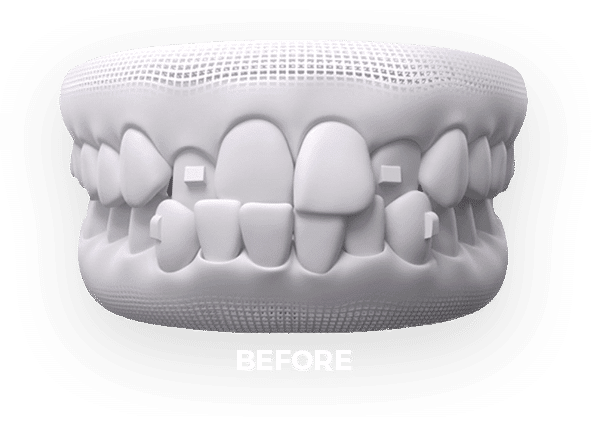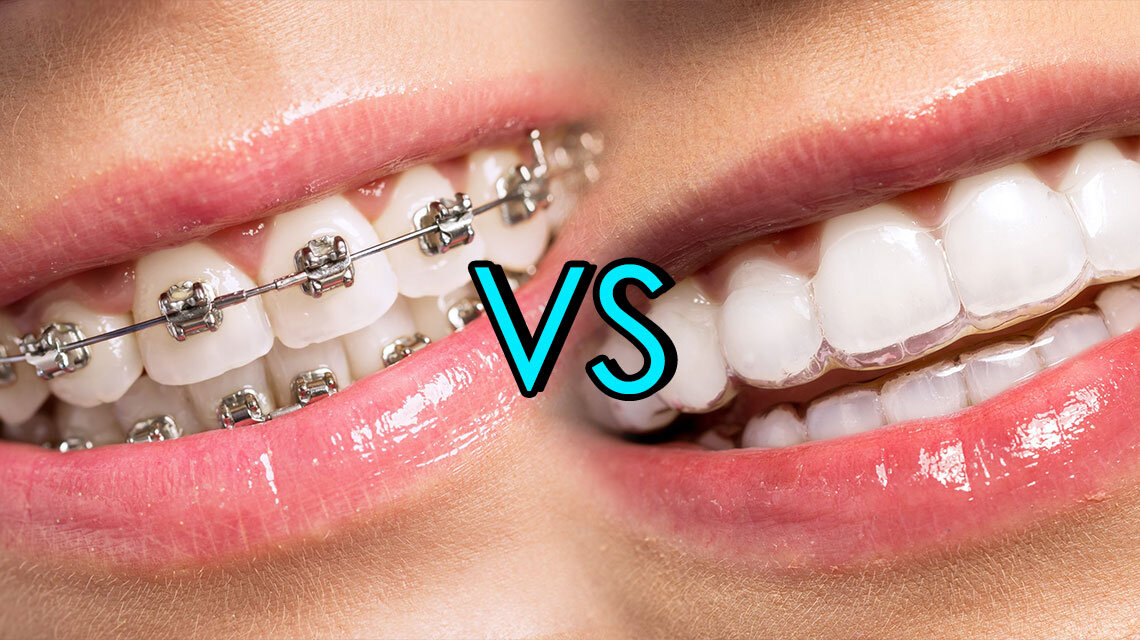Invisalign vs. Conventional Dental braces: Which Alternative Is Right for You?
When considering orthodontic treatment, the option in between Invisalign and traditional braces provides a number of vital factors that merit cautious examination. Invisalign supplies a discreet alternative with removable aligners, while conventional dental braces give a more visible yet effective service for serious imbalance. Each choice incorporates distinct benefits and drawbacks connected to appearances, convenience, therapy period, and price. Recognizing these subtleties is vital for making an educated choice that lines up with your personal preferences and lifestyle. The question continues to be: which alternative will ideal satisfy your orthodontic requirements and expectations?
Overview of Therapy Choices

In comparison, typical dental braces contain metal braces and cables that are bonded to the teeth. This technique applies constant stress gradually to achieve positioning. While reliable for complex orthodontic problems, typical braces require routine visits for adjustments and can present obstacles in maintaining oral hygiene because of the trouble of cleansing around brackets and cables.
Both alternatives have their merits, and the choice typically depends upon details oral problems, lifestyle preferences, and client compliance. Eventually, getting in touch with an orthodontic professional is essential for identifying the most appropriate treatment plan tailored to individual needs. Understanding the nuances of each option can considerably influence the overall success of orthodontic therapy.
Aesthetic Considerations
A significant variable affecting the selection in between Invisalign and typical dental braces is the aesthetic charm each treatment provides. Invisalign aligners are crafted from clear plastic, making them practically unnoticeable when worn. This discreet look is specifically attracting adults and teens who may really feel self-conscious about their orthodontic therapy. The capability to preserve a natural smile throughout the alignment procedure can significantly boost the person's self-confidence in professional and social setups.
In contrast, traditional dental braces include steel brackets and cords, which can be a lot more obvious. While improvements in orthodontic technology have actually caused the development of smaller sized brackets and tinted elastics, standard dental braces still maintain an even more obvious profile. For some people, the visibility of dental braces may prevent them from looking for required therapy.
Ultimately, the option in between Invisalign and conventional dental braces may rest on individual preferences relating to looks. Patients who focus on discernment typically lean towards Invisalign, while those who are less worried about exposure might choose typical braces. Recognizing the aesthetic ramifications of each alternative is important for making an educated choice that aligns with one's way of living and preferences.
Comfort and Convenience

In terms of convenience, Invisalign aligners are detachable, making it possible for individuals to enjoy their preferred foods without restriction and keep optimum oral hygiene. Brushing and flossing are streamlined, as the aligners can be secured during these routines, whereas typical dental braces need careful maneuvering around cords and braces.
In addition, Invisalign's modern system permits fewer orthodontic visits. Patients usually get several sets of aligners at as soon as, which can enhance the therapy process and lower time spent in the orthodontist's chair. In comparison, conventional dental braces require normal modifications, making them much less practical for those with busy routines. Invisalign. Overall, the convenience and convenience of Invisalign make it an attractive choice for lots of people seeking orthodontic therapy.
Therapy Period and Effectiveness
While both Invisalign and conventional braces are reliable in fixing oral imbalances, the period of treatment can vary substantially in between the 2 alternatives. Usually, Invisalign therapy can take anywhere from 12 to 18 months, relying on the intricacy of the situation. The clear aligners work by gradually moving teeth into their wanted settings, and regular follow-ups with an orthodontist assistance guarantee development remains on track.
In contrast, standard dental braces usually require a longer commitment, usually ranging from 18 months to three years. This is due to their fixed nature and the use of brackets and wires, which can be much more effective for serious misalignments and complex cases (Invisalign). The treatment performance of traditional dental braces is well-documented, as they permit for specific changes and better control over tooth activity
Eventually, the option between Invisalign and conventional braces might pivot on both the expected treatment duration and the specific oral problems available. Consulting with an orthodontist is important, as they can offer tailored referrals based upon private needs, guaranteeing the chosen approach straightens with preferred results and timeframes.
Expense Comparison and Insurance Policy Choices
Expense plays a Read Full Report significant duty in the decision-making process for individuals taking into consideration orthodontic treatment, whether opting for Invisalign or typical braces. On average, the expense of Invisalign ranges from $3,000 to $8,000, while typical dental braces usually set you back between $2,000 and $6,000. Factors affecting these costs consist of the complexity of the instance, the duration of therapy, and geographical location.
Insurance policy coverage can dramatically affect out-of-pocket expenses. Lots of oral insurance coverage strategies offer partial insurance coverage for orthodontic treatments, however the specifics can vary commonly. It is crucial for individuals to review their insurance coverage policies to figure out the level of protection for either alternative. Generally, standard dental braces may be a lot more frequently covered by insurance coverage strategies contrasted to Invisalign, which some insurance companies classify as a cosmetic treatment.
In addition, several orthodontic methods supply versatile repayment strategies, making both therapy options much more accessible. Clients must ask about potential financing choices and discount rates for ahead of time payments. Evaluating the overall expense, consisting of insurance advantages and layaway plan, is necessary for making an educated choice that straightens with both aesthetic preferences and spending plan factors to consider.

Verdict
In recap, the choice between Invisalign and conventional braces depends upon numerous variables, consisting of visual preferences, comfort, treatment read the full info here duration, and cost. Invisalign offers a very discreet, detachable alternative that promotes dental hygiene and nutritional flexibility, while traditional dental braces might be better for complex oral problems and typically come at a lower rate point. Ultimately, consultation with an orthodontist is essential to analyze private situations and determine one of the most proper treatment option for attaining optimal oral positioning.
When considering orthodontic therapy, the option between Invisalign and typical braces offers a number of important variables that merit mindful examination.Comparing Invisalign and traditional braces discloses unique treatment choices for orthodontic adjustment.While both Invisalign and typical braces are reliable in fixing oral misalignments, the period of treatment can vary considerably in between top article the two choices.Cost plays a considerable duty in the decision-making process for people considering orthodontic treatment, whether deciding for Invisalign or conventional dental braces.In summary, the option in between Invisalign and traditional dental braces pivots on multiple aspects, consisting of aesthetic choices, convenience, treatment duration, and expense.
Comments on “Frequently Asked Questions Concerning Invisalign: Everything You Required to Know”